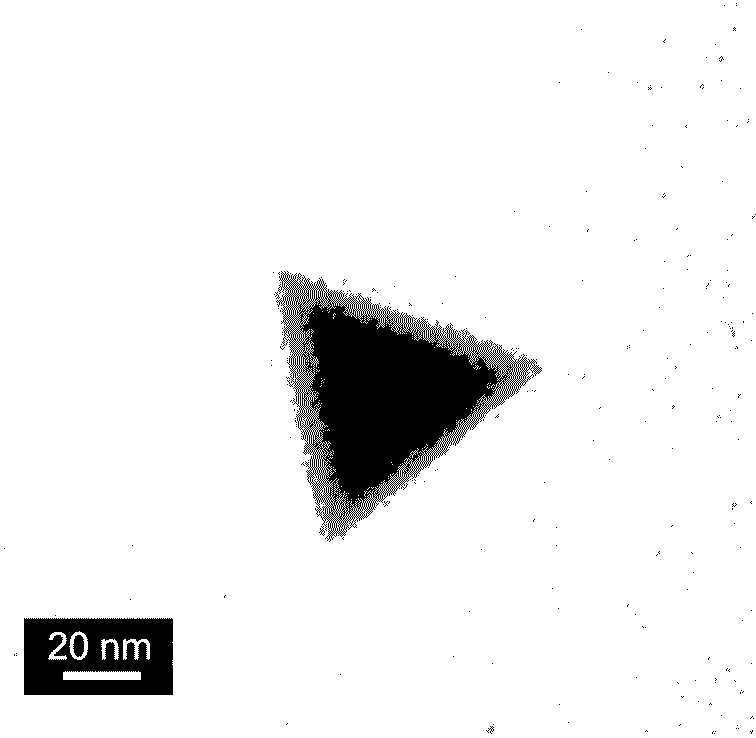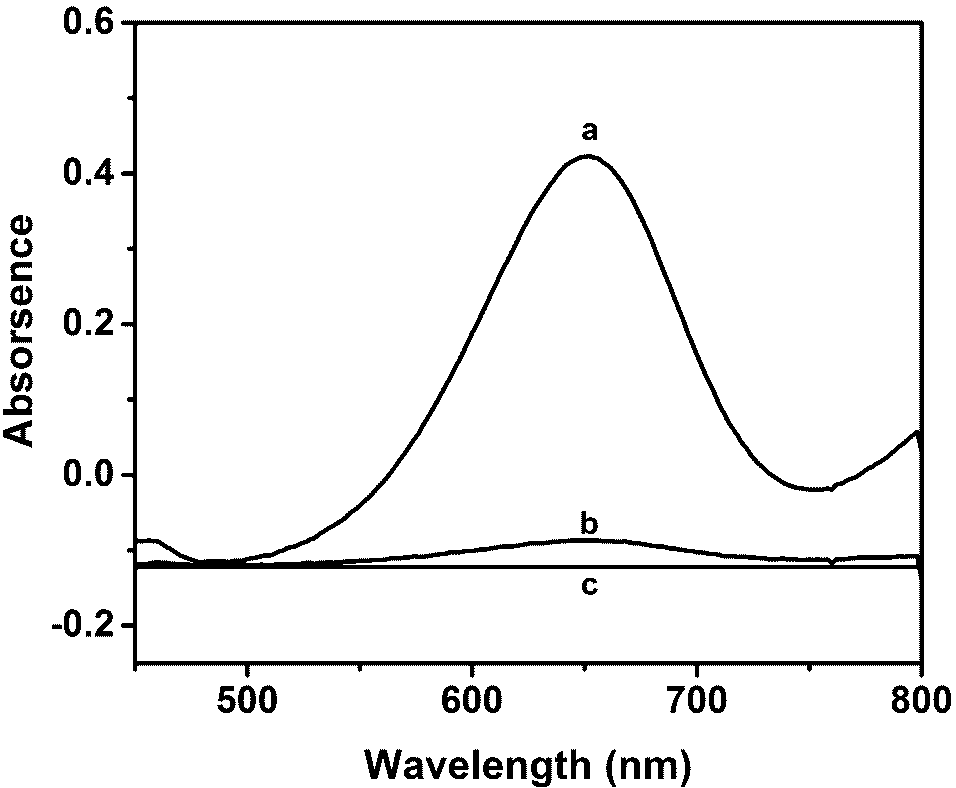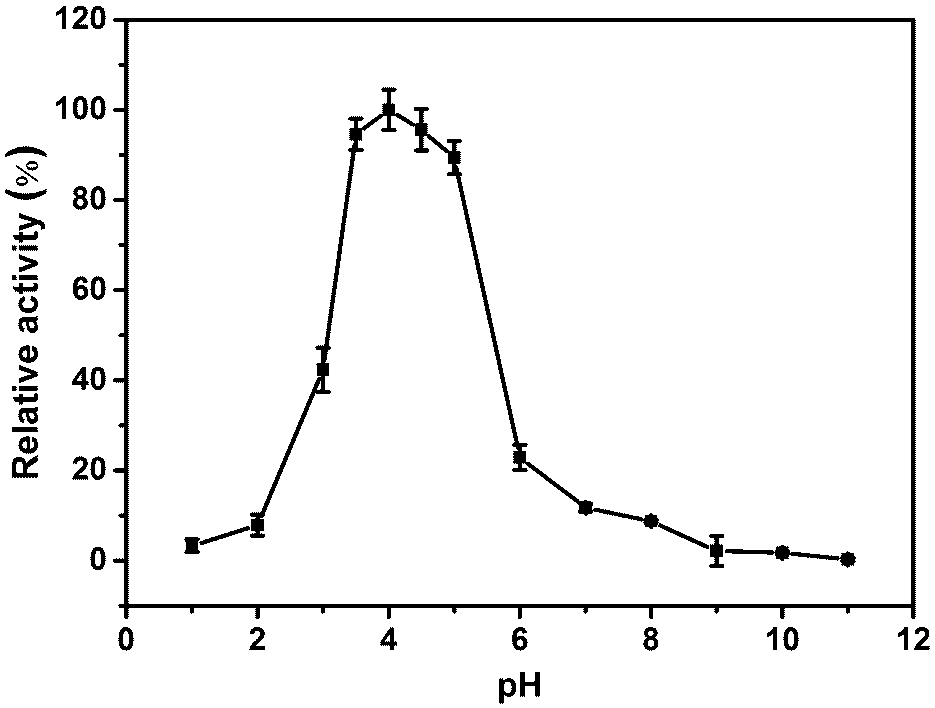Germanium Dioxide Nanozyme and Its Pesticide Detection Application
A germanium dioxide and nano-enzyme technology, applied in the field of analytical chemistry, can solve the problems of long operation time, limited large-scale application, and the detection of organophosphorus pesticides has not been reported, and achieves the effect of broad application prospects.
- Summary
- Abstract
- Description
- Claims
- Application Information
AI Technical Summary
Problems solved by technology
Method used
Image
Examples
Embodiment 1
[0030] Imitation peroxidase material GeO 2 Preparation of nanozymes:
[0031] 1.06 g GeO 2 The solid powder was added to 10 mL of sodium hydroxide solution, 1.46 g of cetyltrimethylammonium bromide (CTAB) was dissolved in 12 mL of distilled water, and the two solutions were stirred at room temperature for 12 h. The CTAB solution was then poured into GeO 2 In alkaline solution, stir at room temperature for 8 h. Finally, the mixture was transferred to an autoclave, maintained at 100 °C for 56 h, and then cooled to room temperature. That is, germanium dioxide (GeO) with a triangular structure is obtained 2 ) nanozymes. figure 1 GeO observed by transmission electron microscopy 2 TEM imaging of nanozymes.
Embodiment 2
[0033] GeO 2 Enzyme-like activity verification of nanozymes:
[0034] Experimental system a: The catalytic reaction system contains H 2 o 2 (0.15 mmol / L), the GeO obtained in the above examples 2 Nanozyme (100 µg / mL), organic chromogen TMB (0.5 mmol / L) in acetate buffer (pH 4.0, 100 mmol / L). After reacting at room temperature (25 °C) for 30 minutes, use a microplate reader to detect the absorbance at 450−800 nm;
[0035] Two other control experiments were done: GeO was not added to the catalytic reaction system of one of the control experiments b. 2 Nanozyme, after reacting for 30 minutes under the same conditions as the above-mentioned experimental system, the absorbance value was detected; the catalytic reaction system of another control experiment c was GeO 2Nanozyme (100 µg / mL) was placed in acetate buffer (pH 4.0, 100 mmol / L), and the absorbance value was detected after standing for 30 minutes under the same conditions as the above experimental system;
[0036] Such...
Embodiment 3
[0038] GeO 2 pH optimization of nanozyme imitation enzyme activity:
[0039] The catalytic reaction system contains H 2 o 2 (0.3 mmol / L), GeO 2 Nanozyme (100 µg / mL), organic chromogenic agent TMB (0.5 mmol / L) and different pH buffers (pH 1.0−2.0, glycine-hydrochloric acid buffer; pH 3.0−6.0, acetic acid-sodium acetate buffer; pH 6.5−8.0, phosphate buffer; pH 9.0−10.0, Tris−HCl buffer; pH 11.0−12.0, sodium bicarbonate-sodium hydroxide buffer). After reacting at room temperature (25°C) for 30 minutes, the absorbance at 650 nm was detected with a microplate reader. Such as image 3 As shown, GeO 2 Nanozymes exhibit peroxidase activity at acidic pH (pH 3.5−5.0), and the optimum pH is around 4.0.
PUM
 Login to View More
Login to View More Abstract
Description
Claims
Application Information
 Login to View More
Login to View More - R&D
- Intellectual Property
- Life Sciences
- Materials
- Tech Scout
- Unparalleled Data Quality
- Higher Quality Content
- 60% Fewer Hallucinations
Browse by: Latest US Patents, China's latest patents, Technical Efficacy Thesaurus, Application Domain, Technology Topic, Popular Technical Reports.
© 2025 PatSnap. All rights reserved.Legal|Privacy policy|Modern Slavery Act Transparency Statement|Sitemap|About US| Contact US: help@patsnap.com



